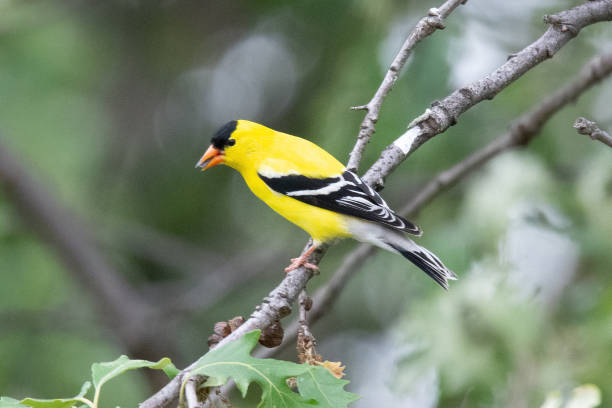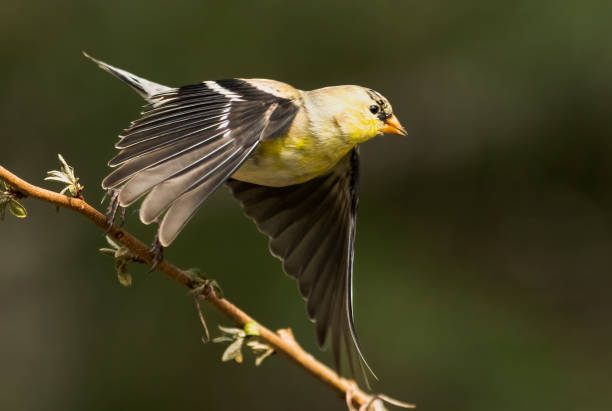Table of Contents
Scientific Classification
| Kingdom | Animalia |
| Phylum | Chordata |
| Class | Aves |
| Order | Passeriformes |
| Family | Fringillidae |
| Genus | Spinus |
| Species | Spinus tristis |
| Scientific Name | Spinus tristis |
Description
The American Goldfinch (Spinus tristis) is a small songbird known for its vibrant colors. During the breeding season, males are particularly striking, showcasing a bright yellow body complemented by black wings, a black cap, and white wing bars. In contrast, females and non-breeding males exhibit more muted olive-brown hues. These birds are relatively small, measuring approximately 4.3 to 5.1 inches (11-13 cm) in length, with a wingspan that ranges from 7.5 to 8.7 inches (19-22 cm). Their weight varies between 11 and 20 grams.
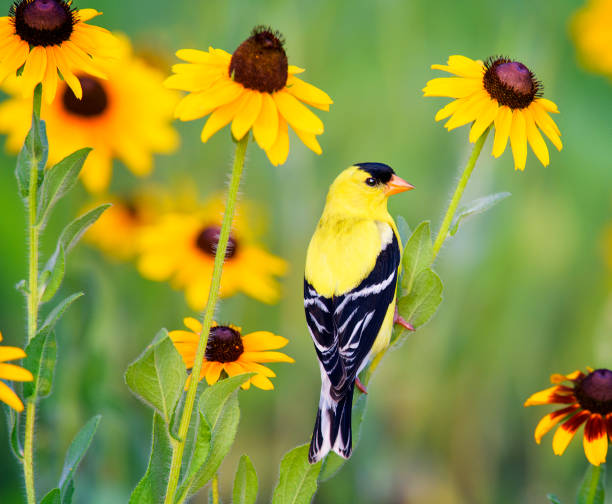
Distribution
The American Goldfinch can be found all over North America. Its range extends from southern Canada, through much of the United States, and into northern Mexico. This species migrates seasonally, with populations from the north heading south for the winter.
Habitat
Goldfinches are commonly found in open environments like meadows, fields, orchards, and suburban gardens. They tend to inhabit areas rich in weeds, shrubs, and scattered trees. These birds flourish in parks and along roadsides, where wildflowers provide ample food sources.
Diet
The American Goldfinch mainly eats seeds, making it primarily granivorous. Their preferred seeds come from sunflowers, dandelions, thistles, and asters. They consume very few insects, which distinguishes them from other songbirds and their finch relatives. These birds are often drawn to backyard feeders filled with nyjer (thistle) seed.
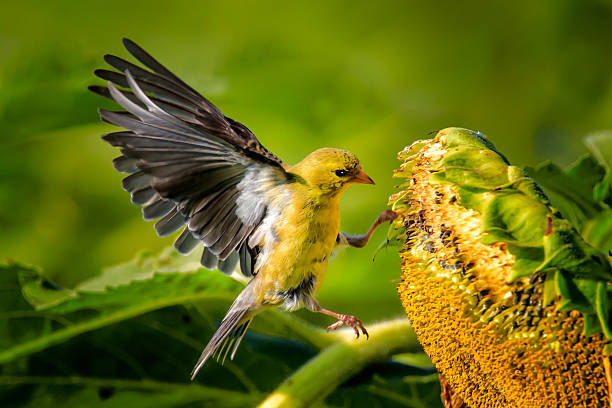
Behavior
Goldfinches are very social birds that frequently gather in flocks when it’s not the breeding season. They exhibit a distinctive undulating flight pattern, characterized by rhythmic wingbeats and graceful swoops. Their call is a delightful, musical “per-chick-o-ree” sound, which they often vocalize while in flight.
One interesting aspect of goldfinches is that they breed later in the summer. This timing coincides with the peak abundance of thistle and milkweed seeds.
Lifespan
The average lifespan of an American Goldfinch in the wild ranges from 3 to 6 years, but some individuals can live over 10 years. Their longevity is influenced by factors like food availability, predation, and environmental conditions.
Reproduction and Lifecycle
Breeding takes place later than in most songbirds, typically from June to August. Males engage in courtship displays, which include fluttering flights and singing. The female constructs a tightly woven nest in a shrub or tree, lining it with plant fibers and feathers. She lays between 4 to 6 pale blue eggs and incubates them for approximately 12 to 14 days.
Once the eggs hatch, both parents feed the chicks primarily with regurgitated seeds. The young birds fledge in about 11 to 17 days. They may depend on their parents for a while before becoming fully independent.
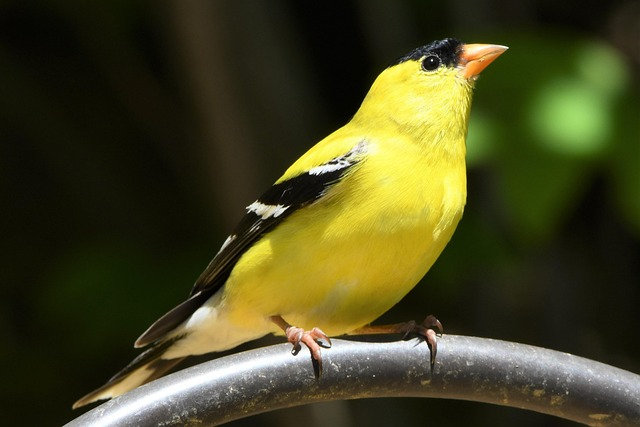
Predators
The American Goldfinch faces predation from various animals, including:
Birds of prey such as hawks and falcons
Snakes that raid nests for eggs and chicks
Domestic and feral cats
Larger birds like jays and crows that may target nests
Despite these threats, their high reproductive rate helps maintain stable population numbers.
Adaptations
The American Goldfinch has several adaptations that help it thrive:
Males change their plumage with the seasons. In summer, they are bright yellow. By winter, they turn dull brown. This helps them blend in and avoid predators.
Late Nesting: Goldfinches nest later in the year. This way, they provide plenty of seeds for their young.
Specialized Bill: Its small, sharp beak is great for picking seeds from plants and feeders.
Flight Pattern: Their undulating flight helps them conserve energy while navigating open areas.
Conservation Status
The International Union for Conservation of Nature (IUCN) categorizes the American Goldfinch as Least Concern. Its population remains stable and is found in various locations. Conservation initiatives focus on safeguarding wildflower meadows, minimizing pesticide application, and ensuring the availability of backyard feeders. While urbanization and habitat loss pose risks, the species has shown a remarkable ability to adapt to human alterations in the environment.
Conclusion
The American Goldfinch is a beautiful bird. With its vibrant colors, delightful song, and fascinating behaviors, it captures the attention of many. Its ability to adapt has enabled it to flourish in different environments throughout North America. To support this cherished species, people can take action by safeguarding their habitats and offering food sources.
